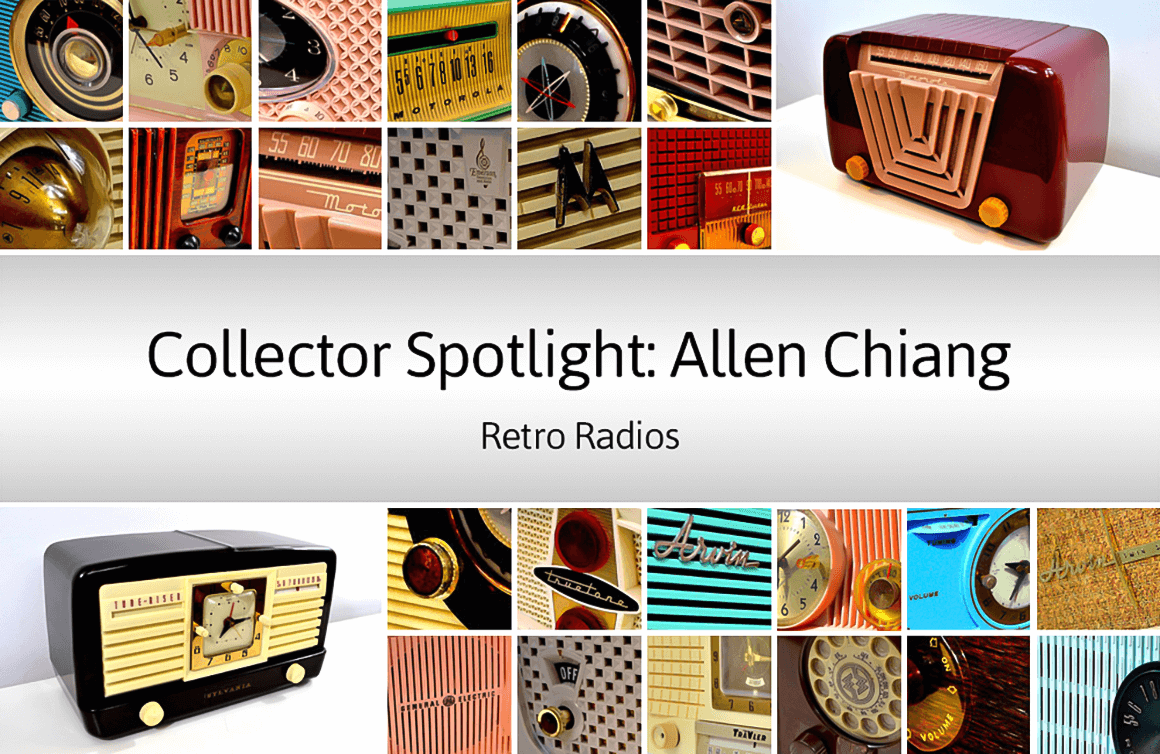Describe your collection.
I collect vacuum tube radios from the 1930s through 1950s. I love the wacky, colourful models and unique designs from those eras. I have hundreds of radios in my collection and founded Retro Radio Farm to sell models I’ve restored and adapted to work with Bluetooth and Amazon Alexa technology. I began selling my radios because I had too many and my wife wanted them out of the house. I picked my favourite 30 radios and sold the rest, first on eBay and later on Retro Radio Farm. As a collector, I don’t need to build the largest collection around; it’s not a contest for me. My collection is fluid.
When and why did you start collecting?
I began collecting around 2012. It’s the sound quality that draws me to vacuum tube radios. I played the guitar for several years and love the organic sound of tube amplifiers over solid-state models. If you ask any musician, they would probably say the same. The sound coming from a vacuum tube radio is the closest thing to a live performance. Performed music is inherently analogue. Most people today have grown up listening to digitally recorded music playing through a solid state or digital device and the sound doesn’t have the same quality. Vacuum tube radios allow listeners to hear the sound re-created as though it was playing live.
I don’t have any memories of vintage radios from my youth. It really is all about the sound for me.
How do you display and store your collection?
I have radios all over the house, on shelves, and in my workshop. I try not to have my collection interfere with family life. My Wall of Fame displays the radios that I love most. If I add a radio to my collection and want to place it on the Wall, another radio must come down. A family vote takes place to ensure everyone agrees.

What do you consider to be the Holy Grail of vacuum tube radios?
I really appreciate the wacky and colourful models from the 1950s the most. My favourites defy logic in that they aren’t necessarily the rarest or most valuable.
One radio that I would love to have is the 1948 Continental model 1600 in pink. I own a bunch in that line but haven’t come across the pink. They didn’t work that well, so people often threw them out, which makes them hard to find.
What advice would you give to someone interested in starting a similar collection?
I would say go to eBay or Etsy to look at what is available. eBay has the biggest selection. Another good source is radio swap meets. A warning about buying vintage radios on eBay: vendors will often say that the radio is in working condition. While it may be true that the radio works, the electronic components are 50 years or older so it can be dangerous to plug into an outlet to start using without professional restoration and repair. It may need repair or restoration for safety reasons.
Also, ask the vendor if all the parts are original. Missing knobs may have been replaced, the radio may have been repainted, or other modifications made. It’s best to ask. Go with your gut when buying one of these old radios. The market is only going up on these old treasures as new generations who have never been exposed to vacuum tube audio discovers the sound. With the addition of being able to play Bluetooth, MP3, or smart speaker technology, their value, especially for the unique and rare ones, is only sure to go up.
What resources do you use to acquire knowledge about your collectibles and connect with other collectors?
Antique Radio is a great website for information. There aren’t too many collector’s guides available as vintage radio collecting isn’t as popular as other collectibles.
Learn more about Allen’s collection and view what he has for sale on the Retro Radio Farm website.
Drop us a line to let us know about your collection of vintage toys and/or games. We just may feature your collection!

